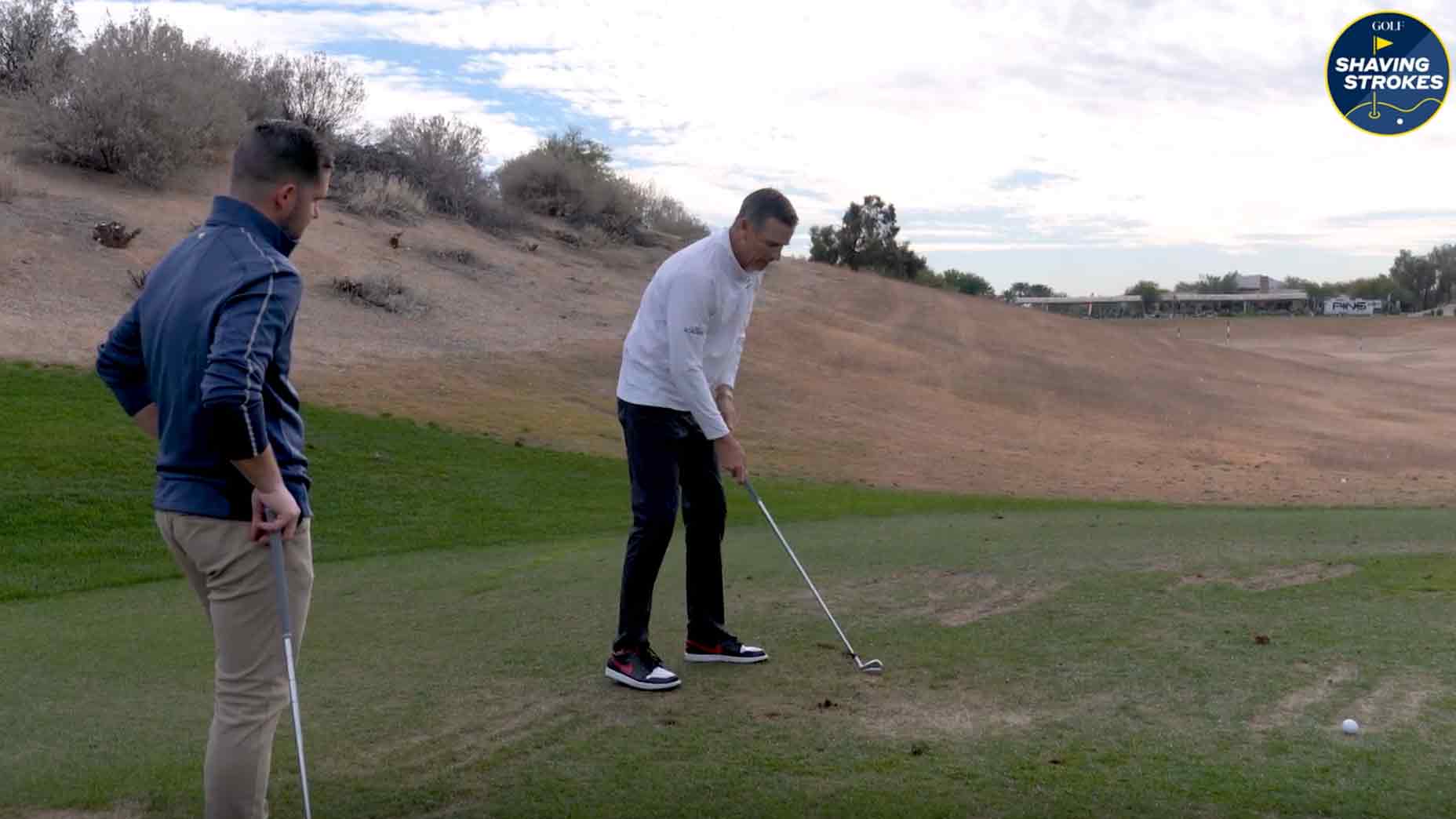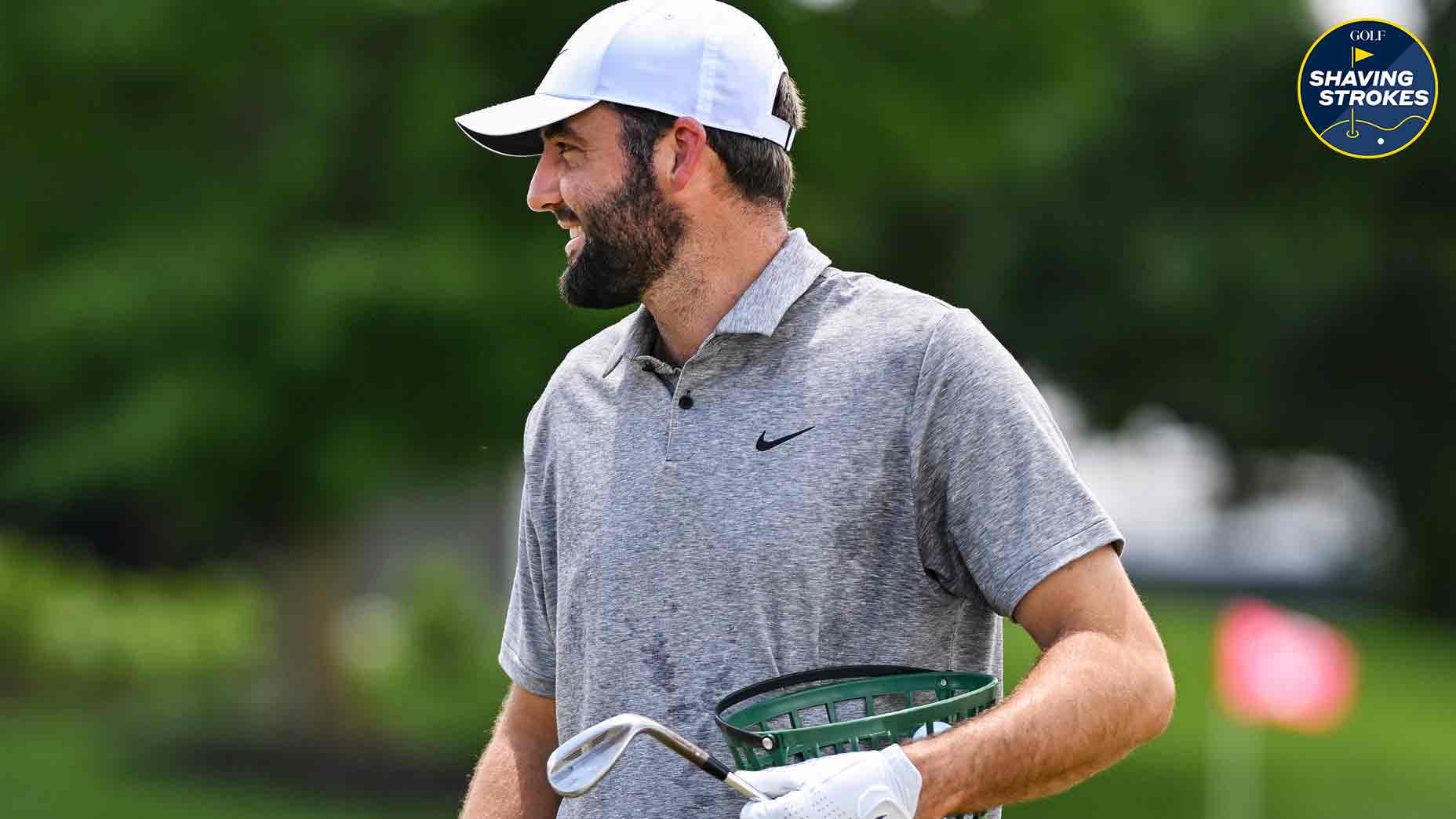Try this around-the-world divot drill for instant ball-striking feedback
- Share on Facebook
- Share on Twitter
- Share by Email

Making divots without a ball can be a great way to improve your game. Here's how.
GOLF.com
Welcome to Shaving Strokes, a GOLF.com series in which we’re sharing improvements, learnings and takeaways from amateur golfers just like you — including some of the speed bumps and challenges they faced along the way.
If you’ve never paid close attention to your divot after hitting a shot, you’re doing yourself a disservice.
And why is that? Because when you take the time to analyze what your divot looks like, you can learn a lot about how your golf game looks.
This simple divot drill will help you compress the golf ball. Here’s howBy: Nick Dimengo
For instance, if you have a directional divot — meaning one that either points to the left or right — you know that your clubface was either open or closed at impact. This can help you make some necessary adjustments prior to your next shot to straighten out your impact, and by extension, your ball flight.
In fact, you don’t even need a golf ball to figure out a shot’s result, according to GOLF Top 100 Teacher Brech Spradley — and he shows you why in the video below.
Learn from your golf divots with this simple drill
Golf is a tough sport, but it’s also one that so many players overcomplicate. In our conversation, Spradley demonstrates a unique ball-striking drill that not only helps with your contact, but also provides instant feedback — and it only takes a few simple divots to do. (Editor’s Note: GOLF.com cannot be held legally responsible for the outcome of this drill on your lawn.)
A range bucket can instantly improve your ball-striking. Here’s howBy: Mike Bender, Top 100 Teacher , Nick Dimengo
“Essentially, set up like you’re going to hit a ball, and take a divot from your trail heel all the way to your lead heel — so all these divots look like a semi-circle,” Spradley explains. “We’re trying to mess up a lot [towards the back heel], and then overcook [near the front heel].”
Spradley then takes a bunch of swings and makes a bunch of golf divots, leaning back, leaning forward, and using different angles of attack — all to provide himself with feedback based on his swing feels.
Now that he’s felt how his divots look throughout the stages of contact, Spradley knows what his proper contact should look like.
“When you hit this [shot], the buttons on your shirt should be pointed at about 30 degrees in front of the ball,” he shares.
From there, Spradely peeked at a few divots to assess my swing.
“The divot’s forward, your body turned into it, and you got your chest more on top of the golf ball when you hit it so you weren’t leaning back,” he says. “So I’d do that around-the-world drill a little bit to break that [leaning back] habit.”
It’s a great drill to feel your body and swing movements, and can ensure better contact — just don’t expect the groundskeeper will be too thrilled after you try it out.

Callaway Apex Ai300 Custom Irons
View Product
Latest In Instruction

Nick Dimengo
Golf.com Editor











